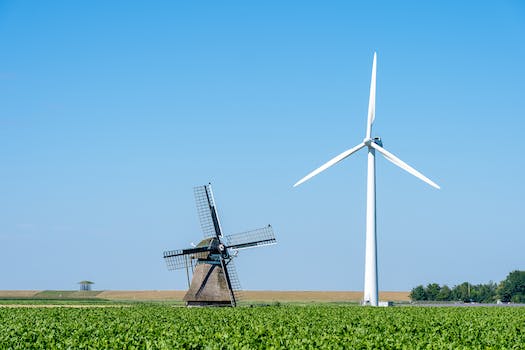Introduction to Injection Molding in Manufacturing
Injection molding is a highly efficient manufacturing process that’s shaping the future of the industry. It involves melting plastic or other materials and injecting them into a mold to create a variety of parts. This versatile process allows for high-volume production of complex and intricate shapes with great precision. Its cost-effectiveness, speed, and ability to use a wide range of materials make injection molding a go-to method for industries like automotive, medical, consumer goods, and more. As technology advances, the possibilities for what can be achieved with injection molding are expanding, making it a key player in the future of manufacturing.
The Evolution of Injection Molding Technology
Injection molding technology has experienced significant evolution over the years, transforming the manufacturing landscape. Initially, this technology was simple and involved a basic process of injecting molten plastic into a mold. Over time, technological advancements have introduced automated machines that not only increase production speed but also enhance precision. The introduction of 3D printing technology has further revolutionized injection molding, allowing for the creation of complex and custom shapes with ease. Today’s injection molding is more efficient, cost-effective, and versatile, making it a vital part of the future of manufacturing.
Current Applications of Injection Molding in Manufacturing
Injection molding is widely used in today’s manufacturing sector due to its efficiency and versatility. This method is commonly used to create a variety of parts, from small components to entire body panels of cars. It’s especially prevalent in the production of high-volume, disposable items like packaging and consumer products. Medical devices, such as syringes and surgical tools, are also often produced using injection molding. Furthermore, this technique is used in the manufacturing of durable goods like appliances, electronic housings, and toys. The speed, precision, and cost-effectiveness of injection molding make it a favored technique for mass production in many industries.
The Role of Automation in Injection Molding
Automation plays a pivotal role in modern injection molding, significantly enhancing efficiency and precision. Automated machines in injection molding streamline the production process by reducing human errors, accelerating production speed, and ensuring consistent quality of the final products. They can operate around the clock, which increases productivity and eventually leads to a reduction in manufacturing cost. Automation also minimizes the need for manual labor, thereby reducing the risk of workplace accidents. From loading raw materials to the final stage of product packaging, automation has revolutionized the injection molding industry, paving the way for the future of manufacturing.

The Impact of 3D Printing on Injection Molding
3D printing is revolutionizing the world of injection molding, a traditional manufacturing method. This innovative technology allows for quicker prototype production, reducing the time it takes to bring a product to market. It also enables manufacturers to create more complex shapes and designs that were previously impossible or too costly with injection molding. Furthermore, 3D printing reduces waste, as it only uses the necessary amount of material. However, it’s important to note that while 3D printing is changing the game, it doesn’t mean the end for injection molding. The two methods can coexist, with 3D printing used for prototyping and small-scale production, and injection molding continuing to be the go-to method for large-scale manufacturing.
The Integration of AI and Machine Learning in Injection Molding
The future of manufacturing is here and it’s being shaped by the integration of Artificial Intelligence (AI) and Machine Learning in injection molding. These advanced technologies are transforming the injection molding process, making it more efficient, precise and cost-effective. AI and machine learning algorithms analyze vast amounts of data from the molding process, predict potential defects, and make real-time adjustments. This reduces waste, enhances product quality, and accelerates production. Therefore, manufacturers are increasingly embracing AI and machine learning to stay competitive and meet the growing demand for high-quality products.
Sustainability and Eco-Friendly Practices in Injection Molding
In the world of manufacturing, injection molding is evolving to prioritize sustainability and eco-friendly practices. Companies are now focusing on reducing waste, energy consumption, and using recyclable materials. They are also adopting advanced technologies to make the injection molding process more efficient, reducing the carbon footprint. One such method is using biodegradable plastics that decompose over time, causing minimal harm to the environment. With these green initiatives, injection molding is not only revolutionizing manufacturing but also leading the way in environmental responsibility.

Future Trends in Injection Molding Technology
The future of injection molding technology promises to be exciting and innovative, with several trends emerging. One significant trend is the increasing use of biodegradable materials, which will reduce environmental waste and make the manufacturing process more sustainable. Another trend is the rise of automation and robotics in injection molding. This will not only increase efficiency and productivity but also reduce human error. Additionally, there’s a shift towards 3D printing technology which allows for greater design flexibility and customization. Finally, we can expect advancements in software capabilities that will provide better control and precision in the molding process. These trends indicate a future of injection molding that is more sustainable, efficient, and technologically advanced.
Challenges and Opportunities in the Future of Injection Molding
The future of injection molding carries both challenges and opportunities. On the challenge side, the industry faces increasing pressure to reduce waste and improve sustainability. This means manufacturers need to innovate and find ways to recycle materials or reduce the amount of plastic used in the first place. On the opportunity side, advancements in technology are paving the way for smarter, more efficient production processes. Innovations like 3D printing and AI automation can streamline the injection molding process, reduce costs, and increase precision. So, while the industry faces some significant hurdles, there’s also a lot of potential for growth and improvement.
Conclusion: The Potential of Injection Molding in Future Manufacturing
In conclusion, injection molding holds immense potential in shaping the future of manufacturing. Its capability to produce parts with high precision and at a rapid pace makes it a standout choice for mass production. Moreover, it reduces waste and lowers manufacturing costs, making it an efficient and economical method. With advancements in technology and materials, injection molding is expected to revolutionize the manufacturing industry. It’s clear that this technique is not just a trend, but a sustainable solution for the future of manufacturing.

0 Comments